5 Important 9/11 Facts You Don't Already Know
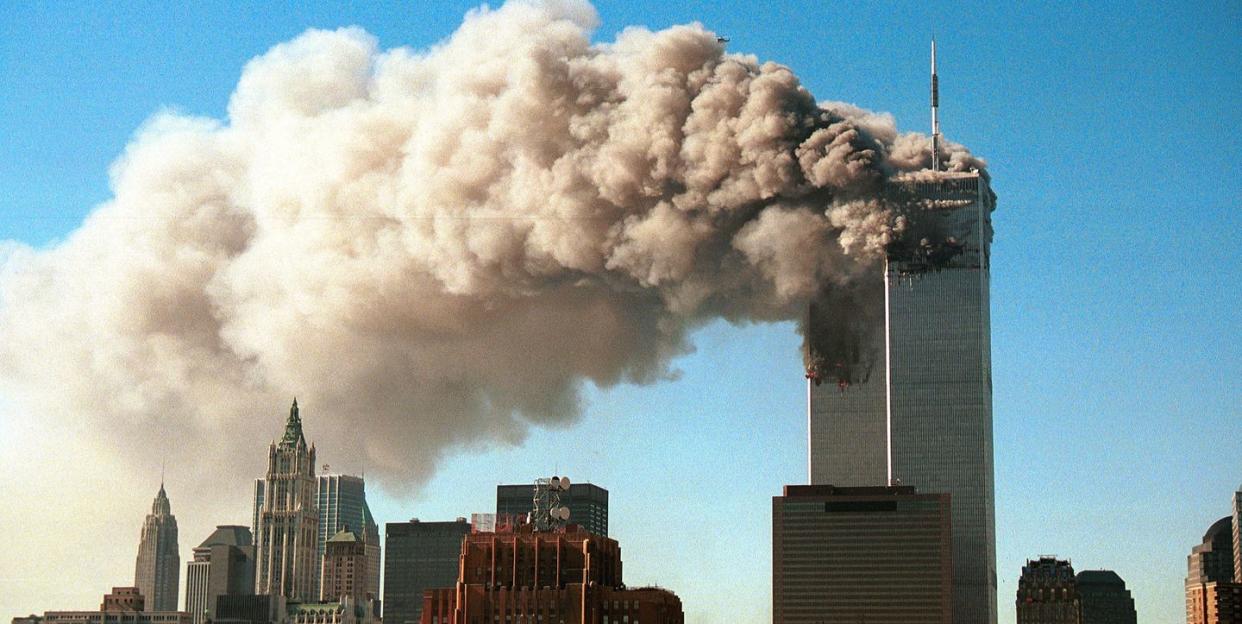
On September 11, 2001, the history of the United States changed forever when the Islamic extremist group al Qaeda hijacked four American aircrafts and steered thousands of innocent people toward their death.
I remember exactly where I was when the Twin Towers came crashing down in New York City. I was in my first grade classroom in Pennsylvania when an announcement came on the loud speaker, encouraging teachers to turn on the television and pause all lessons. Then, everyone watched the news in horror until my parents came to take me home.
Because I was only five at the time, I wasn't entirely sure what had happened. I knew that the adults were scared and I saw flames on my TV screen, but it took years for me to actually comprehend the impact of 9/11. The attacks didn't just cut thousands of lives short, they completely altered the way the U.S. handles security, terrorism, foreign affairs, immigration, and war, not to mention that it left us trillions of dollars in debt.
I would go on to learn about 9/11 in history books, and now, 18 years later, I'm writing about it to make sure that no one forgets about the brave souls who lost their lives on that tragic day. Here are five facts about September 11, 2001, that you may not have known:
1. Only 60 percent of WTC victims have been identified to this day.
The attacks that took place on 9/11 add up to deadliest domestic terrorist attack that has ever taken place on modern American soil, with the total deaths reaching 2,977 (not including the 19 terrorists).
At the World Trade Center (WTC) in Lower Manhattan, 2,753 people died after American Airlines Flight 11 and United Airlines Flight 175 crashed into the Twin Towers. According to CNN, only 1,644, or 60 percent, of those 2,753 victims have been identified as of July 2019. Not only does the death toll include innocent workers of the north and south towers, but it also includes NYC firefighters, police offers, and passersby.
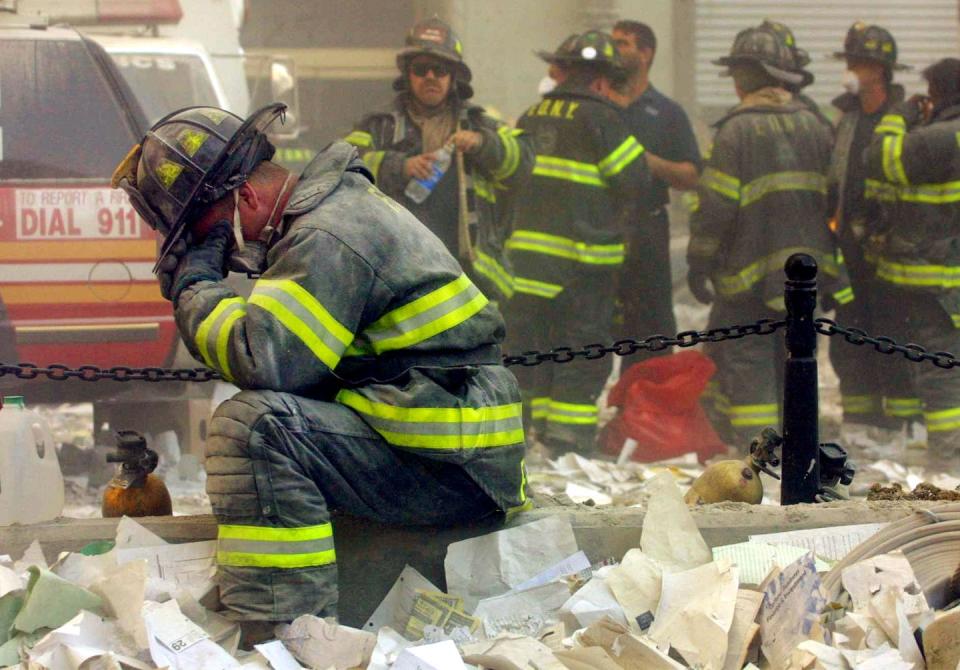
Another flight, American Airlines Flight 77, crashed into the pentagon, killing 184 people. A fourth plane, United Airlines Flight 93, went down near Shanksville, PA, resulting in 40 deaths of crew members and passengers.
2. The time between the first attack and the collapse of both World Trade Center towers is 102 minutes.
Though it seemed like a lifetime between the time of the first attack and the collapse of the Twin Towers, everything took place within two hours.
American Airlines Flight 11 traveling from Boston to Los Angeles struck the first tower in New York City at approximately 8:46 a.m. ET. 17 minutes later, United Airlines Flight 175 also scheduled to travel from Boston to Los Angeles hit the south tower in New York City.
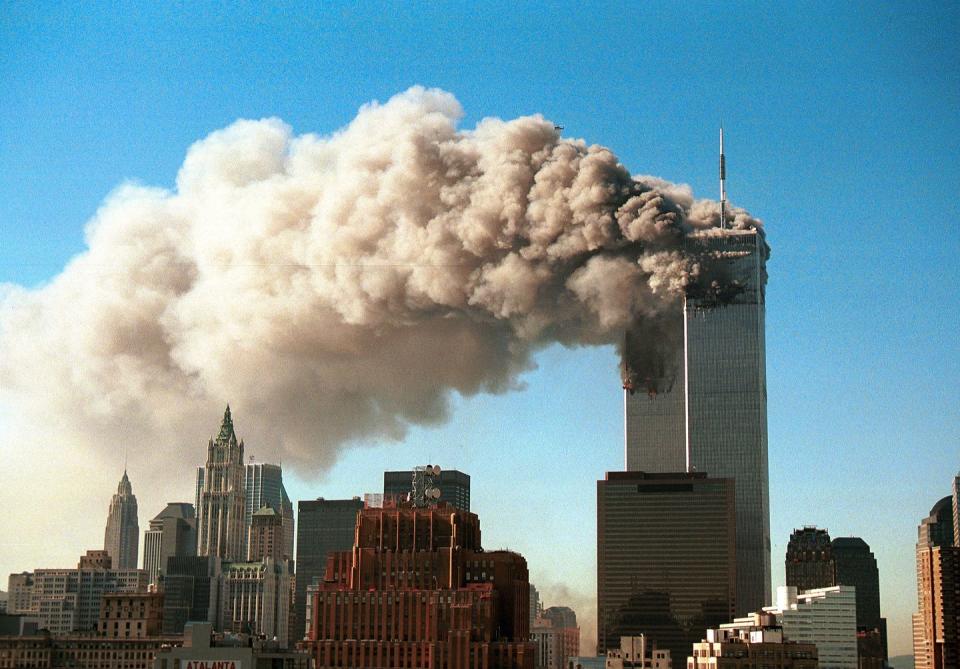
At 9:37 a.m. ET, American Airlines Flight 77 heading to Los Angeles from Dulles, Virginia pummeled into the Pentagon Building in Washington D.C. And 22 minutes later at 9:59 a.m. ET, the south tower collapsed in just 10 seconds.
Directly after at 10:03 a.m. ET, United Airlines Flight 93 that was set to travel from Newark, New Jersey to San Francisco, CA crashed in Shanksville, Pennsylvania. Finally at 10:28 a.m. ET, the north tower of WTC collapsed.
3. The immediate economic impact of 9/11 totals at least $3.3 trillion.
Physical damage, the 2001 recession, the War on Terror, medical funding, insurance, and the U.S. debt crisis bring the total economic impact of the September 11 attacks well beyond a trillion dollars.
To start, the New York Comptrollers Officers calculated the cost of physical damage to $55 billion in 2002, with the collapsing World Trade buildings alone costing $8 billion. About $24 billion would cover expected income of lives lost, and office supplies, subway repairs, and damaged automobiles racked up to $11 billion. The city would spend $6 billion fixing other damaged buildings and cleaning up the surrounding area, and another $5 billion to treat injuries.
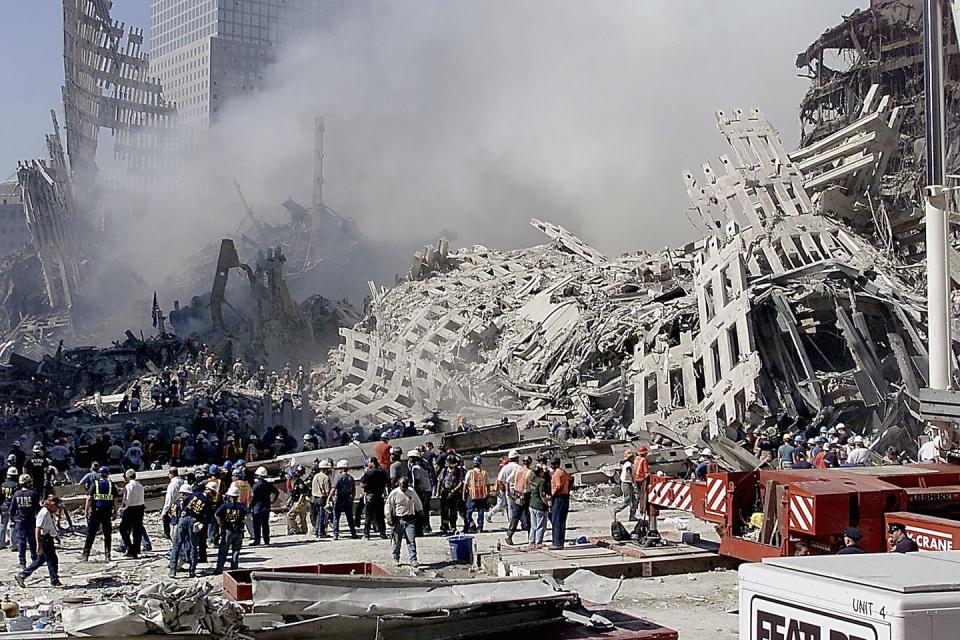
The stock market closed for four days following the attacks—the first time since The Great Depression—and prices dropped dramatically. The airline industry lost $5 billion, leading former President George W. Bush to issue $15 billion in federal loans. Though the U.S. was already in a recession as of March 2001, the aftermath of 9/11 made it worse, and unemployment rose drastically until 2003.
The biggest driver in U.S. spending post-September 11? War. On September 20, 2001, Bush called for a War on Terror. Bush sent armed forces to Afghanistan in search of founder of al-Qaeda Osama bin Laden and his army. The Central Intelligence Agency (CIA) claimed that Iraq, led by Saddam Hussein, was aiding al-Qaeda.
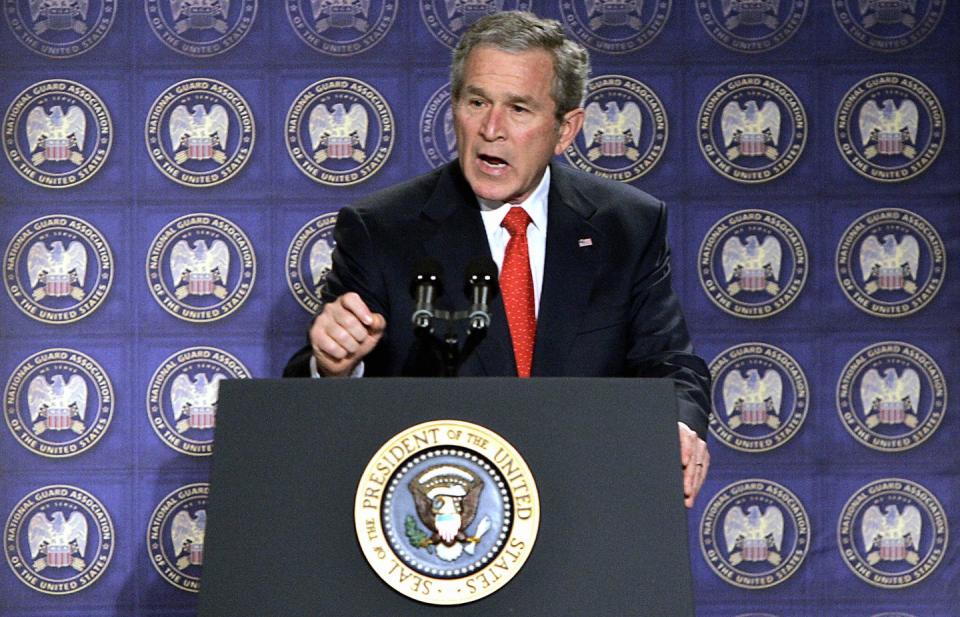
Following Bush's two presidential terms, the U.S. spent $1.164 trillion on war funding and related costs. Former President Barrack Obama spent $807 billion on war during his time in office, and President Donald Trump budgeted to spend $156 billion, bringing the approximate total cost of the War on Terror to $2.126 trillion.
4. It took 3.1 million hours of labor to clean up 1.8 million tons of debris at Ground Zero.
"Ground Zero" refers to the place in New York City where the north and south World Trade buildings collapsed. The collapsed towers left a gaping hole that anyone could visit. In the direct aftermath of the attacks, first responders rescued those who were trapped in the rubble.
By September 12, 2011, responders had a new heartbreaking mission of then searching for human remains to later identify bodies and notify loved ones. As you can imagine, working around Ground Zero was very dangerous. Some firefighters wrote their names on their arms in case they were crushed during cleanup. Toxic debris has also made thousands sick, including many men who developed breast cancer (this only happens in one percent of all men).
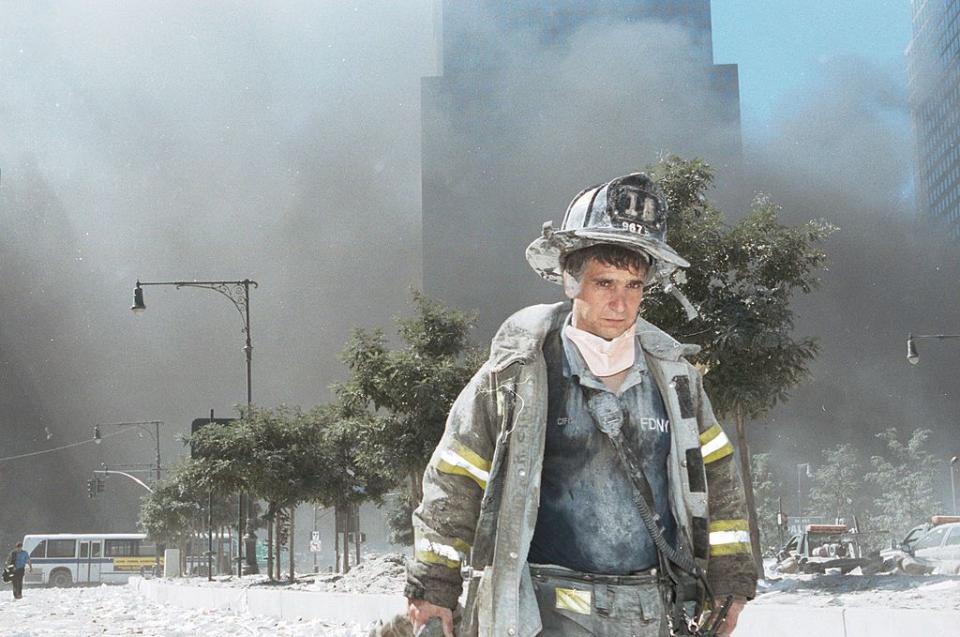
According to CNN, ground zero wasn't officially cleaned up until May 30, 2002. It took approximately 3.1 million hours of work to clean up an estimated 1.8 million tons of debris. In 2011, former governor of New York George Pataki signed the James Zadroga 9/11 Health and Compensation Act of 2010 (named after an NYPD officer who died after working at Ground Zero) to provided compensation and medical aid to Ground Zero workers.
5. One World Trade Center is the tallest building in America, and one of the safest in the world.
On March 5, 2002, former governor Pataki and mayor Michael Bloomberg announced that plans for a memorial were in the works. After a competition that allowed the public to submit design ideas, construction commenced in 2006.
One World Trade Center, also known as Freedom Tower, was completed in 2014 and stands high and proud as the tallest building in the U.S. at 1,792 feet to tip. One world Trade Center is home to office buildings, an observatory, a 9/11 Memorial, and a 9/11 Museum.
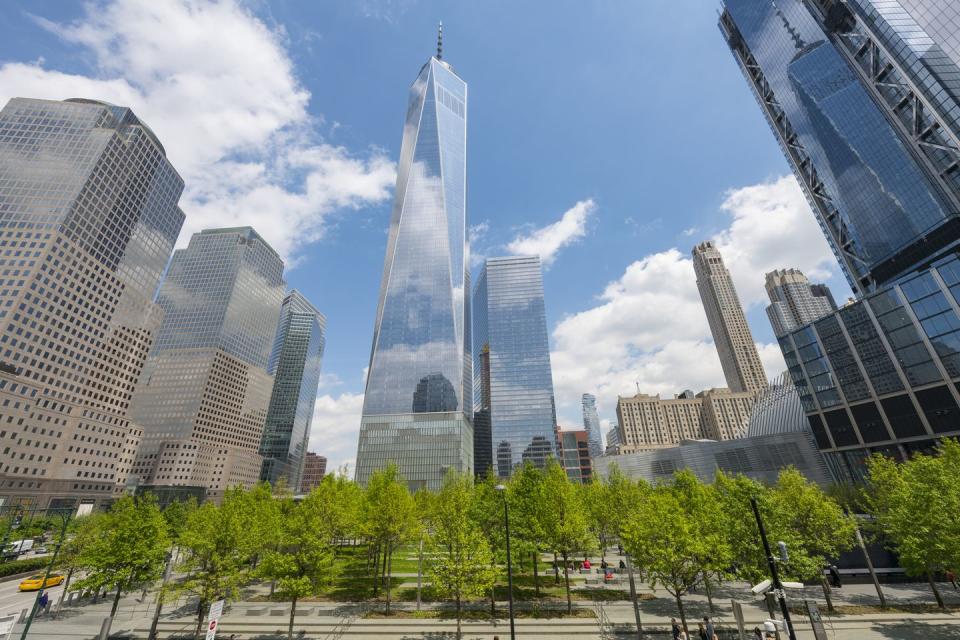
With high-strength concrete, reinforcement steel bars, fireproofing, and an additional staircase for first responders, the WTC is one of the safest buildings in the world. The tower's observatory deck begins at 1,362 feet with a glass parapet that extends to 1,368 feet, which was the exact height of the Twin Towers.
Outside of the building at the 9/11 Memorial is the Survivor Tree, which lived through the September 11 attacks and symbolizes rebirth.
Stay updated on the latest science-backed health, fitness, and nutrition news by signing up for the Prevention.com newsletter here. For added fun, follow us on Instagram.
You Might Also Like

